The No. 1 job of truck brakes is safety; within that application, there’s more than one way to stop a truck. Drums have been the brake of choice for many trucks, but air disc brakes (ADBs) continue to gain popularity in nearly all heavy-duty on-road applications.
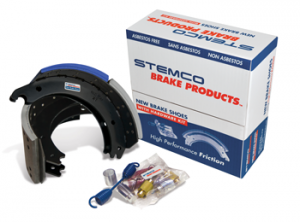
“Current [ADB] market penetration is in the 12% to 15% range for power units and 8% to 10% for trailers,” said John Thompson, sales manager CV NAFTA, for TMD Friction, supplier of commercial vehicle brake friction, brake pads and linings to both the OE and aftermarket sector. “Installations are increasing and it is currently believed that penetration will level off in the 20% range in the next five years. Some OEMs are standard with steer axle disc brakes, and upcharges for spec’ing disc brakes have reduced somewhat. These trends, coupled with improved performance over cam brakes, will help increase market penetration.”
Fleet Equipment talked to the top minds in the brake and friction markets to get the answers to the most asked brake spec’ing questions.
Let’s talk application—what type of brake is going to be best for my applications?
When it comes to application, all brake systems will be impacted by the service environment, frequency of use conditions and quality of components utilized.
“For applications that carry more load, have more frequent stops, see more off-highway or off-road activity and/or are exposed to weather extremes, fleets have found it beneficial to select more robust drum brake systems with larger pad widths or more aggressive linings,” says Bill Hicks, director of product planning/Market Development, trailer suspension business unit, SAF-Holland, which offers a full brake product portfolio for heavy-duty trailers and some auxiliary axle applications. “Disc brakes provide the ultimate answer to the most difficult applications with their inherent superior brake fade resistance to mountainous or steep grade routes or other situations where the fleet is concerned with enhanced safety and durability.”
That said, brake life cycles vary wildly due to numerous factors across many applications. Alex Wieczorek, Stemco’s segment business leader, brake products, recommends that fleets should consider the route the vehicle travels (city, over the road, rural), the average load of the vehicle (heavy or lightly loaded), the terrain (flat, hilly or mountainous) and the driver’s experience level. “Understanding these factors and choosing brake components that correctly match the vocation of the vehicle such as over the road, tank/bulk haulers, refuse/construction and transit bus will help extend these brake intervals,” he explains.
I’ve been using S-cam drum brakes for years, why should I make the switch to ADBs?
Bottom line: ADBs provide shorter stopping distances with virtually no brake fading, side-to-side torque variation or other problems. They also typically last 50% to 100% longer than drum brake counterparts, according to Gary Ganaway, director of OE and technical sales for Bendix Commercial Vehicle Systems.
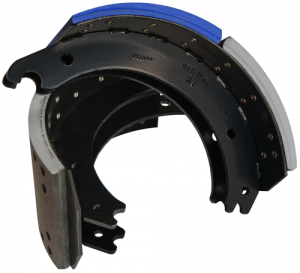
Across all the wheel, brake and friction companies we talked to—Abex Commercial Grade Friction manufacturer Federal-Mogul Motorparts, Bendix, Meritor North America, Haldex Brake Products Corp., SAF-Holland, Stemco, TMD Friction and WABCO—agree that ADBs provide the maximum stopping power.
“The greatest benefit of air disc brakes is their ability to provide consistent torque levels—meaning essentially no fade—across a very broad range of operating temperatures,” explains Tom Rogers, senior applications engineer, Commercial Vehicle Friction, Federal-Mogul Motorparts. “Traditionally, this has made air disc brakes popular in specialized applications like fire trucks, commuter buses and some city buses. With the advent of RSD regulations, however, more fleets are considering air disc brakes for steer axles that will be matched up with drive axles equipped with drum brakes.”
“The braking feel is more like that of a passenger car, which is one reason why more and more truck drivers appreciate them,” adds Brent Fitch, director of fleet sales for WABCO, which focuses on its ADB offering with its MAXXUS products that exceed stopping distance regulations by more than 15%, according to the company. “To us the future of braking in this industry is disc brakes.”
You’re also looking at lower overall total maintenance for the life of the brake due to longer service intervals. (More on that in a minute.)
So what’s the ADB catch?
You probably already guessed it: Cost. The initial cost to spec ADBs comes at a premium. According to Bendix’s Ganaway, the cost of ADBs is, approximately, a $600 per axle premium.
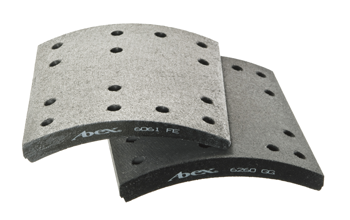
There’s no way around it—you’re going to pay more for ADBs up-front, but let’s apply the total cost of ownership (TCO) equation to the cost estimate. Gopi Krishnan, Meritor’s senior director, brakes for North America, explains that the TCO for ADB comes from: High reliability; Higher residual value; Increased uptime; Shorter CSA inspection times; and Relatively lower maintenance costs. Of course, the value proposition of ADBs can vary depending on vocation, application and the fleet manager’s priorities.
“Our estimates are that return on investments could be anywhere from 12 months to 18 months depending upon application, robustness of design of the brake, routes, etc.,” Krishnan explains.
With all this talk of ADBs, drum brakes are still a great brake choice, right?
Definitely. There’s a reason that drum brakes still make up more than 80% of the industry’s brake installations. There are plenty of excellent drum brake options in today’s market place. Take Webb Wheel’s brake drum offerings, for example. Webb offers a “good, better, best” drum selection depending on the fleet’s needs. It’s “best” selection is the Vortex Unlimited drum that promotes lower running temperatures with 25% longer life than traditional brake drums, according to the company.
Bendix, Meritor and Stemco all offer full drum brake product portfolios. Drum brakes are a tried and true product that is still a top choice among fleets in terms of safety and serviceability.
At the end of the day, the recent regulation changes relative to all types of brakes have the potential to significantly improve truck safety. However, Dan Dunkleberger, Haldex Brake Products Corp. product manager, explains the out-of-service rate for all brake-related violations are on the rise.
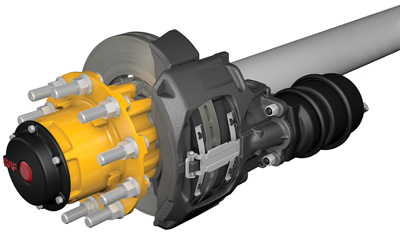
“Violations conducted during Brake Safety Week in 2014 was 16.2% compared to 13.5% in 2013; brake related violations represent around half of all vehicle out-of-service violations found by inspectors,” he explains. “Well functioning brakes should be our top priority, and effective brake maintenance is key to resolving this problem.”
Speaking of maintenance, what do I need to be aware of in terms of inspections and interval expectations?
Looking at cost-per-mile for brake intervals the same way as cost per mile for fuel will improve the overall expenses for a fleet. Regular periodic inspection schedules are the best way to monitor brake condition. Making sure all the technicians are trained and understand the setup and maintenance of the brake foundation is ongoing and forever changing.

“From a maintenance perspective, there’s a lot of give and take between [drum and air disc brakes],” says Dennis Griffin product manager, commercial vehicle friction, Federal-Mogul Motorparts. “With air disc brakes, if you only need to replace the pads, and not the rotors, then replacement is faster than it would be in a traditional shoe lining replacement. But if you need to pull the rotors, then you’re looking at removing the hub, cleaning and reinstalling the bearings and replacing the seal, which changes the equation entirely.”
The big brake maintenance challenge is maximizing the brake lining usage. When lining is measured during a PM, the maintenance manager must make the call to send the vehicle back on the road knowing that there is enough lining to make it to the next PM. Changing shoes too soon throws away usable lining, but sending the vehicle out with too little lining assures that a new drum will be required when the vehicle returns and safety is compromised.
“During a PM, along with lining thickness measurements, chamber strokes should be checked to make sure that auto slacks are functioning properly,” TMD Friction’s Thompson recommends. “Brake and slack adjuster maintenance manuals should be referred to for specs. Thorough inspections should be made of air lines, chamber bracket welds, bracket attachment to the spider and air chamber attachment to the chamber bracket. Any flaws found in the components should result in their replacement.”
S-cam drum brake friction is typically easy to inspect in terms of lining thickness on the vehicle. “Friction manufacturers incorporate lining wear indicating features, which make a visual inspection rather straight forward. In some [drum brake] cases dust shields may need to be removed to make an inspection,” Stemco’s Wieczorek explains. “Air disc brake (ADB) friction can be inspected by looking through the caliper-loading opening; however, some applications may require removal of the wheel to gain an accurate inspection.”
For drum brakes you’re looking for a .25-in. minimum thickness and for air disc brakes, a .12-in. minimum thickness. Regular periodic inspection schedules are the best way to monitor brake condition.
What is important to know about brake lining selection?
The No. 1 takeaway to remember is don’t skimp on the friction material. Make sure you get the correct lining for your application.
“Fleets, today, are under intense pressure to cut costs. In most cases, using the same friction material on both the tractor and trailer helped aid in this process,” Haldex’s Dunkleberger says. “This common sense practice was made cost prohibitive when RSD friction products were first introduced into the market. Higher acquisition cost accompanied with the abrasive compounds of most RSD friction suppliers caused fleets to carry two separate friction materials. This ‘forced change’ significantly increased brake costs and effected the brake balance that many end users worked so hard to achieve.”
To get the most for your money when purchasing friction material, you need to understand the difference between premium and economy brake linings and disc pads and premium drums and rotors. That is a challenge that is usually deferred to the trust of the local distributor or dealer.
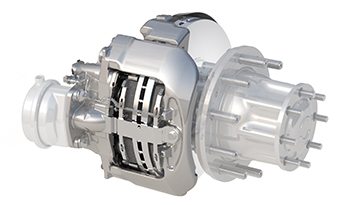
“There is tremendous value in premium offerings that will be tapped as fleet knowledge increases,” TMD Friction’s Thompson says. “Linings and pads are available that can greatly increase brake life, depending on application. The more relines that can be avoided due to longer life, result in significant saving to the fleet, even though more money is paid up front for the wheel end kits.”
Spending more money up front for quality material can save at least one reline over the life of the vehicle.






